
When markets across the world and all asset classes are dropping, it's time to put things into (international) perspective and see if any alternatives to US stocks are available.
I always keep an eye on this Relative Rotation Graph, which holds a group of international stock market indexes and plots them against the Dow Jones World Index.
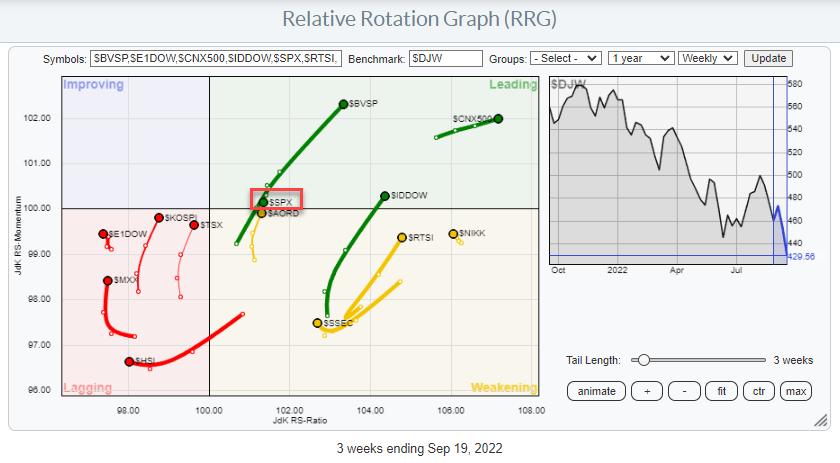
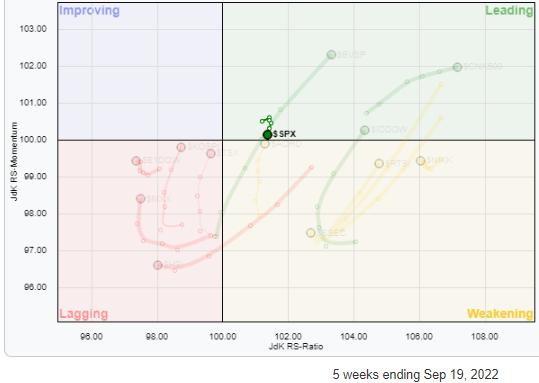 The S&P ($SPX) is slightly hidden behind the tails of the Brazilian Bovespa and the Australian All Ordinaries indexes. The small chart highlights the rotation for $SPX over the last five weeks. It reveals that, in this universe, the $SPX tail is the only one on a negative RRG-Heading. With the US making up almost half of the benchmark, many other markets in the universe must rotate in opposite directions. This is exactly what we see happening on this RRG.
The S&P ($SPX) is slightly hidden behind the tails of the Brazilian Bovespa and the Australian All Ordinaries indexes. The small chart highlights the rotation for $SPX over the last five weeks. It reveals that, in this universe, the $SPX tail is the only one on a negative RRG-Heading. With the US making up almost half of the benchmark, many other markets in the universe must rotate in opposite directions. This is exactly what we see happening on this RRG.
Looking at the graph above, there are three markets that stand out in a positive way. They are the three tails inside the leading quadrant: Brazil ($BVSP), Indonesia ($IDDOW) and India ($CNX500). With US stocks sinking hard now, these rotations are becoming more and more pronounced.
Brazil
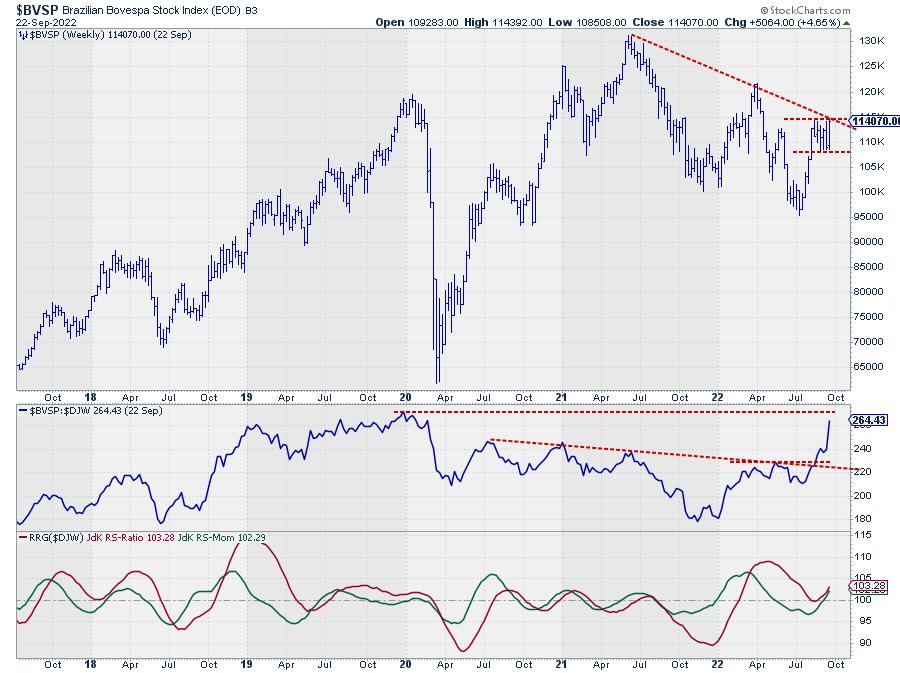
The $BVSP Index is nowhere near its most recent summer lows (95000). Instead, this market is pushing against a double resistance level offered by the falling trendline, coming off its 2021 high, and the level of the most recent high (August) in the area around 11500.
After two years of relative weakness, the relative strength for $BVSP vs. the DJ World index and, therefore, the S&P 500, is now shooting higher,
India
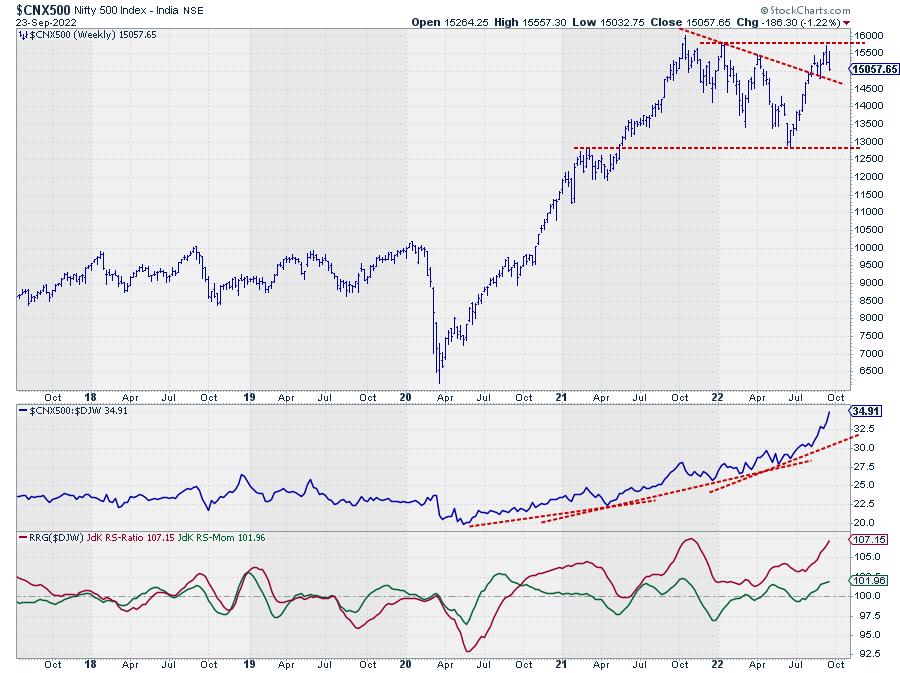
The second tail inside the leading quadrant is for the Indian $CNX500 index. Instead of challenging its summer lows, this market is also pushing against overhead resistance, sending relative strength rapidly higher.
Looking at the RRG-Lines, the $CNX500 index is already in a relative uptrend vs. the DJ World index since August 2020, when both RRG-Lines moved above the 100-level. Since then, the JdK RS-Momentum line has dipped a few times below 100, causing a few rotations completed at the right-hand side of the RRG without pushing the tail into the lagging quadrant. Underscoring the strong relative trend, the recent acceleration of relative strength is giving Indian stocks another positive push against the rest of the world, and certainly against the S&P 500.
On the price chart, $CNX500 has managed to take out the falling resistance line and is now challenging overhead resistance coming from the 2021-2022 peaks. Breaking above 16000 would push this market to new all-time highs and unlock more upside potential.
Indonesia
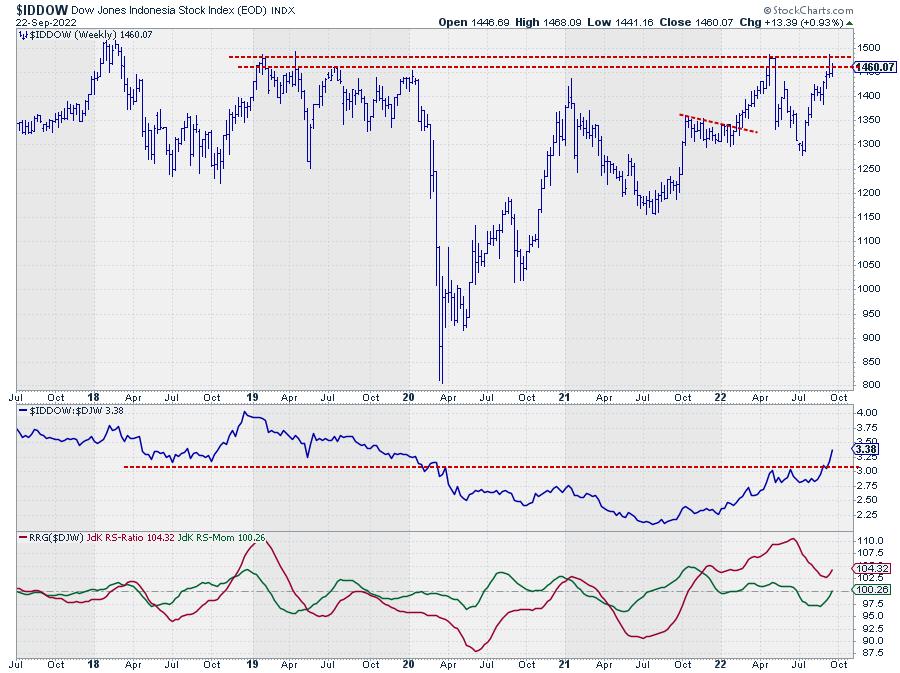
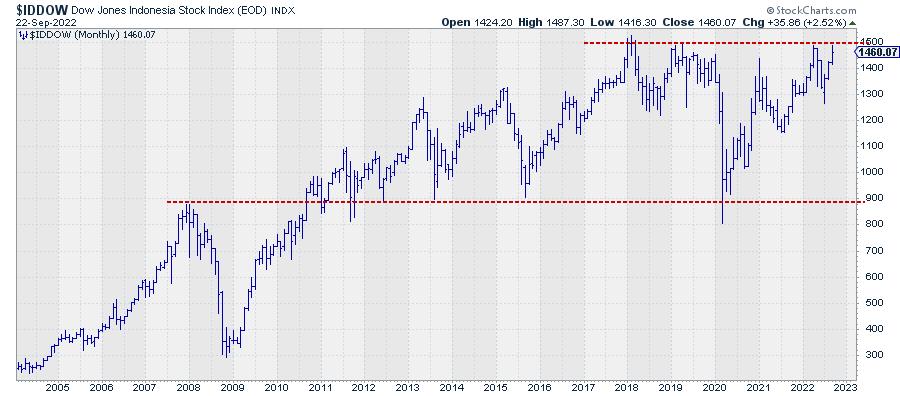
The big chart above shows the $IDDOW pushing against an almost five-year-old overhead resistance barrier. Since the end of 2021, this market has started to outperform the world index and, very recently, managed to break above the most recent peaks in relative strength, giving the relative trend another boost. This recent push in relative strength is causing the RRG-lines to curl back up again, and it is bringing the green JdK RS-Momentum line above 100, pushing the tail back into the leading quadrant.
The smaller chart is the monthly chart of $IDDOW and shows how important that overhead resistance level is. Once that breaks a lot of upside potential will be unlocked.
The US Dollar
For a long time, the strength of the US dollar made it less interesting for US-based investors to look at foreign stocks. Investing in foreign stocks by default means exposure to foreign currency. And when the US dollar is getting stronger and stronger against pretty much all currencies around the world, that creates a drag on any exposure to foreign stocks.
This can be seen very well when you chart the various ETFs that offer exposure to these foreign markets. For the three markets charted above, these are EWZ for Brazil, INDA for India and EIDO for Indonesia. These ETFs are quoted in USD, so they do not represent the actual buying and selling in those specific markets, as these indexes will be multiplied by the USD exchange rate for the local currency.
That is why I never look at the charts of these ETFs to analyze trends or mark support and resistance levels. For that, I use the actual index chart. But these ETFs are great instruments to create exposure to foreign markets when needed.
The recent relative strength in these indexes is so strong that they are now countering the drag coming from the strength of the US dollar and sending their relative strength lines for the ETFs vs. SPY upward.
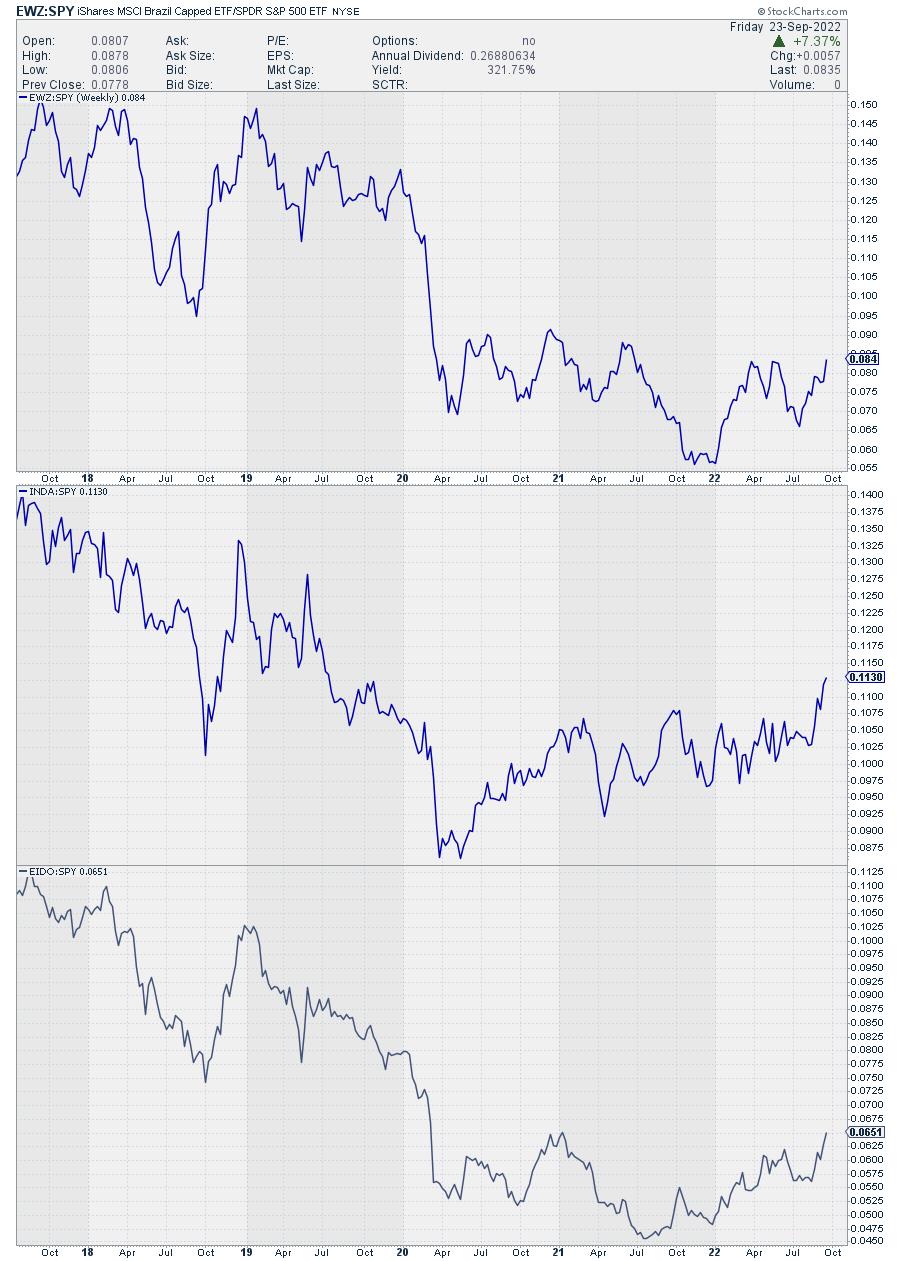
All of a sudden, a few of these foreign stock markets are becoming interesting alternatives for US investors, as long as the current slump remains in play.
#StaySafe and have a great weekend, hope to see you again next Tuesday for a new episode of Sector Spotlight.
--Julius
Julius de Kempenaer
Senior Technical Analyst, StockCharts.com
Creator, Relative Rotation Graphs
Founder, RRG Research
Host of: Sector Spotlight
Please find my handles for social media channels under the Bio below.
Feedback, comments or questions are welcome at Juliusdk@stockcharts.com. I cannot promise to respond to each and every message, but I will certainly read them and, where reasonably possible, use the feedback and comments or answer questions.
To discuss RRG with me on S.C.A.N., tag me using the handle Julius_RRG.
RRG, Relative Rotation Graphs, JdK RS-Ratio, and JdK RS-Momentum are registered trademarks of RRG Research.





